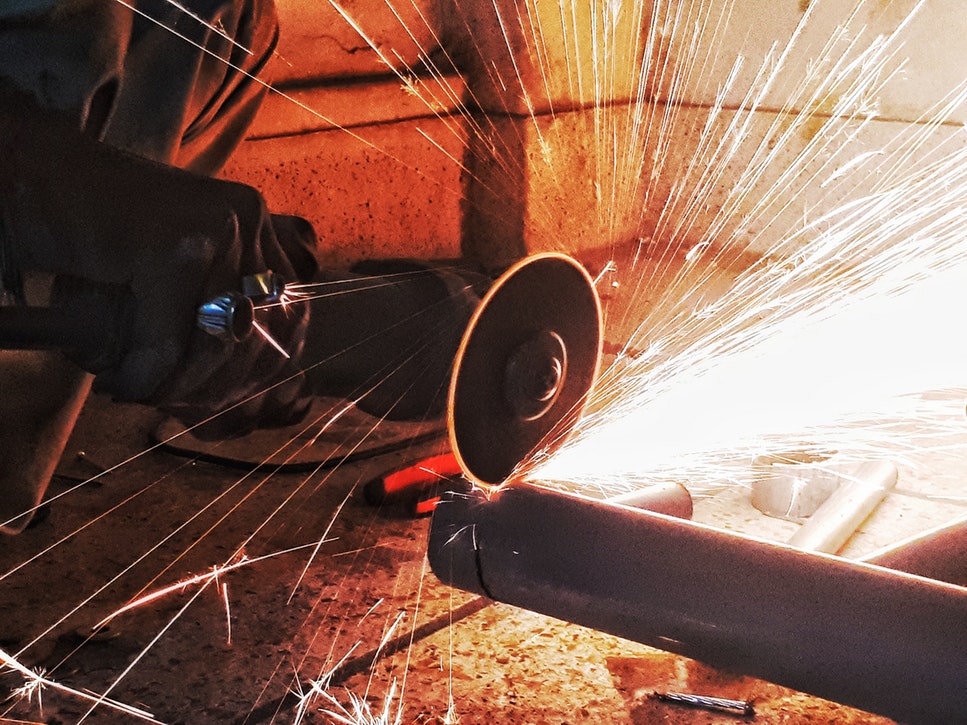
From Ukraine peace plans to Kazakh uranium—all that and more in our new nuclear digest
Our November Nuclear Digest by Bellona’s Environmental Transparency Center is out now. Here’s a quick taste of just three nuclear issues arising in U...
News

Publish date: March 25, 2019
Written by: Bellona Europa
News
The global iron and steel industry accounts for approximately 5% of total global CO2 emissions. On average, 1.9 tonnes of CO2 are emitted for every tonne of steel produced. About 2.8MtCO2 per year are solely related to energy use in the iron and steel sector, about 8% of total energy-related emissions[i]. Over 1.3 billion tons of steel are manufactured and used every year. Demand for steel, particularly in developing economies, has seen global CO2 emissions from steel increase steadily[ii]. The EU is the second largest producer of steel in the world after China. Its output is over 177 million tonnes of steel a year, with approximately 500 production sites throughout the EU accounting for 11% of global output. Even though about 50% of European steel is produced from scrap recycling[iii], the growing demand and time lag of steel accumulation in society will keep the production from virgin materials going for a long time[iv].
There are two predominant ways to produce steel. New steel made from iron ore is produced in a blast furnace-basic oxygen furnace (BF-BOF). Steel can be recycled via the electric arc furnace (EAF) route. The production of high quality new steel requires iron ore. The natural ore is rich in iron combined with oxygen. In Europe, coking coal, a form of high quality coal also known as metallurgical coal, is used simultaneously as a source of heating energy and also takes part in the chemical reaction to produce steel. The steel sector is a large user of coal; in Germany, approximately 1/3 of coal is used in steel manufacturing[v].
 Credit: Bellona
Credit: Bellona
Steel-making is closely linked to many downstream industries such as automotive, construction, electronics, and mechanical and electrical engineering. Steel is also used in renewable electricity infrastructure, such as wind generation. Even though over half of the steel is being recycled already, the high quality materials still need to be produced from virgin materials. According to some estimates, unchanged applications of steel and long lifetimes will necessitate around 50% of the steel in 2050 to still be produced from new materials[vi]. Even if this demand would be drastically reduced, new production would still be needed due to the long lifetime and accumulation of steel in society[vii].
Globally, steel demand is expected to exceed scrap availability, with CO2 intensive primary steel making up the shortfall. The Indian government plans to more than double production capacity by 2030 as it pursues a massive infrastructure programme[viii]. The growing demand and long lifetime an obstacle for higher recycling rates: some products can only use a limited amount of scrap due to a requirement for high quality steel.
In other words, the more scrap is being used, the less control there is over the properties over the material due to the impurities in the scrap. Even if abundant scrap is available, only a limited amount of it can be used to form the higher steel quality required for several products[ix].
So how do we deal with the emissions from the steel industry?
Find out more about the process of the steel industry and its potential to decarbonize in our report “An Industry’s Guide to Climate Action”
[i] International Energy Agency, “Energy Technology Perspectives 2016,” 2016. [Online]. Available: https://www.iea.org/publications/freepublications/publication/EnergyTechnologyPerspectives2016_ ExecutiveSummary_EnglishVersion.pdf.
[ii]Ibid.
[iii] ESTEP, “ Resource Efficiency for the European steel industry,” 2011. [Online]. Available: https://www. eesc.europa.eu/sites/default/files/resources/docs/lamberterie.pdf .
[iv] J. Morfeldt, W. Nijs and S. Silveira, “The impact of climate targets on future steel production e an analysis based on a global energy system model,” Journal of Cleaner Production, pp. 469-482, 2015.
[v] EURACOAL, “Country profiles: Germany,” 2017. [Online]. Available: https://euracoal.eu/info/ country-profiles/germany/.
[vi] J. Morfeldt, W. Nijs and S. Silveira, “The impact of climate targets on future steel production e an analysis based on a global energy system model,” Journal of Cleaner Production, pp. 469-482, 2015.
[vii] Ibid.
[viii] M. Pooler, “Growth in steel demand forecast to slow next year,” 2017. [Online]. Available: https:// www.ft.com/content/3593c38a-b27a-11e7-a398-73d59db9e399
[ix] B. J. van Ruijven, D. P. van Vuuren, W. Boskaljon, M. L. Neelis, D. Saygin and M. K. Patel , “Long-term model-based projections of energy use and CO2 emissions from the global steel and cement industries,” Resources, Conservation and Recycling, p. 15–36, 2016.

Our November Nuclear Digest by Bellona’s Environmental Transparency Center is out now. Here’s a quick taste of just three nuclear issues arising in U...

For three years now, Bellona has continued its work in exile from Vilnius, sustaining and expanding its analysis despite war, repression, and the collapse of international cooperation with Russia in the environmental and nuclear fields

The Board of the Bellona Foundation has appointed former Minister of Climate and the Environment Sveinung Rotevatn as Managing Director of Bellona No...

Økokrim, Norway’s authority for investigating and prosecuting economic and environmental crime, has imposed a record fine on Equinor following a comp...